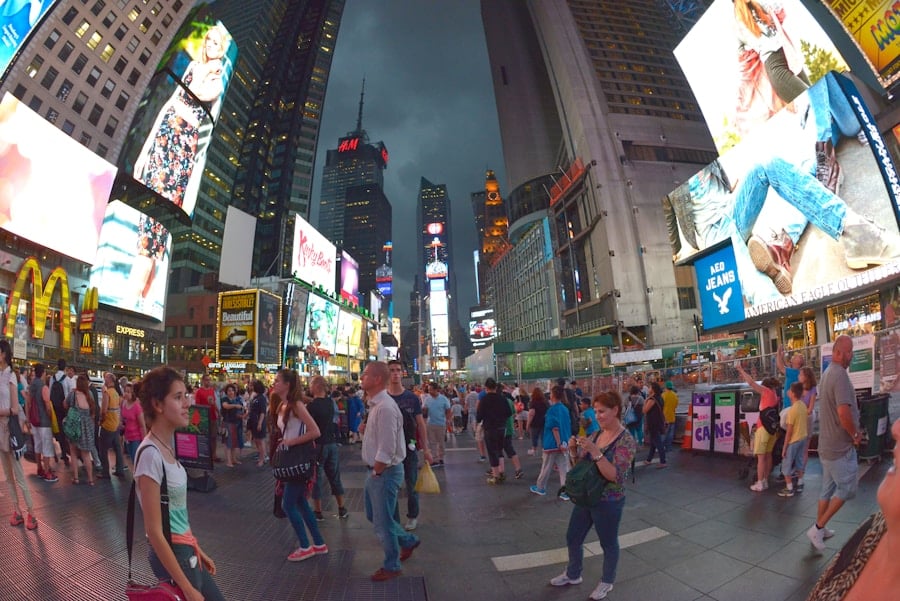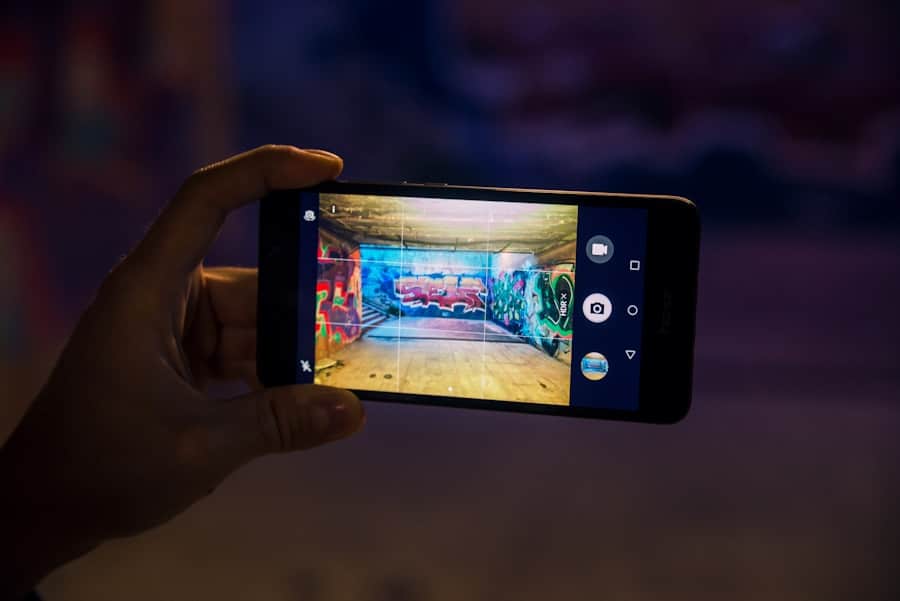Augmented Reality (AR) has emerged as a transformative technology in the realm of advertising, offering brands innovative ways to engage consumers. By overlaying digital content onto the real world, AR creates immersive experiences that captivate audiences and enhance brand storytelling. This technology has evolved significantly, moving from niche applications to mainstream marketing strategies.
As consumers increasingly seek interactive and personalized experiences, AR provides a unique avenue for brands to connect with their target audiences in meaningful ways. The integration of AR into advertising campaigns allows brands to break free from traditional marketing constraints. Instead of passive consumption of information, AR invites consumers to actively participate in the brand narrative.
This shift not only enhances user experience but also fosters a deeper emotional connection between consumers and brands. As AR technology continues to advance, its potential applications in advertising are expanding, making it an essential tool for marketers looking to stand out in a crowded marketplace.
Key Takeaways
- AR in interactive advertising campaigns enhances consumer engagement and interaction with brands.
- AR has a significant impact on consumer engagement, leading to increased brand awareness and purchase intent.
- Successful case studies of AR advertising campaigns include examples from IKEA, Pepsi, and Toyota, showcasing the effectiveness of AR in driving consumer interest and sales.
- Brands can incorporate AR into their advertising strategies by creating immersive and interactive experiences, leveraging AR technology to showcase products and engage with consumers.
- The future of AR in advertising is promising, with advancements in technology and consumer adoption driving the growth of AR advertising campaigns.
The Impact of AR on Consumer Engagement
The impact of AR on consumer engagement is profound, as it transforms the way individuals interact with products and brands. Traditional advertising methods often rely on static images or videos that can fail to capture attention in an oversaturated media landscape. In contrast, AR offers dynamic and interactive experiences that can significantly increase consumer interest and involvement.
For instance, when consumers can visualize how a piece of furniture will look in their home through an AR app, they are more likely to engage with the product and make a purchase. Moreover, AR enhances the storytelling aspect of advertising. Brands can create narratives that unfold in real-time as consumers interact with their products.
This level of engagement not only keeps consumers entertained but also encourages them to share their experiences on social media platforms, amplifying the reach of the campaign. Research indicates that campaigns utilizing AR can lead to higher retention rates and increased brand loyalty, as consumers feel more connected to brands that offer innovative and engaging experiences.
Case Studies of Successful AR Advertising Campaigns

Several brands have successfully harnessed the power of AR in their advertising campaigns, demonstrating its effectiveness in driving consumer engagement and sales. One notable example is IKEA’s “IKEA Place” app, which allows users to visualize how furniture items will fit and look in their own homes using AR technology. By simply pointing their smartphone camera at a room, users can place virtual furniture items in real-time, helping them make informed purchasing decisions.
Another compelling case study is Pepsi’s “Unbelievable” campaign, which utilized AR to create a memorable experience for consumers at a bus stop in London. The campaign featured a digital screen that displayed various surreal scenarios, such as a giant monster attacking the city or a UFO landing.
Passersby were captivated by the unexpected visuals, leading to increased foot traffic and social media buzz around the brand. This campaign exemplifies how AR can create shareable moments that resonate with audiences, ultimately enhancing brand visibility and engagement.
How Brands Can Incorporate AR into Their Advertising Strategies
Incorporating AR into advertising strategies requires careful planning and execution to ensure that the technology enhances the overall brand message rather than detracting from it. Brands should begin by identifying specific goals for their AR campaigns, such as increasing brand awareness, driving sales, or enhancing customer experience. Once objectives are established, brands can explore various AR formats, including mobile apps, social media filters, or interactive web experiences.
Collaboration with experienced AR developers is crucial for creating high-quality content that resonates with consumers. Brands should focus on delivering value through their AR experiences, whether by providing useful information about products or creating entertaining interactions that encourage sharing. Additionally, integrating AR with existing marketing channels can amplify its impact; for example, using QR codes on print ads that lead to an AR experience can bridge the gap between traditional and digital marketing efforts.
The Future of AR in Advertising
The future of AR in advertising looks promising as technology continues to evolve and consumer expectations shift towards more interactive experiences. With advancements in hardware such as augmented reality glasses and improved smartphone capabilities, the accessibility of AR is set to increase significantly. This will enable brands to create even more immersive experiences that seamlessly blend digital content with the physical world.
Furthermore, as artificial intelligence (AI) becomes more integrated with AR technology, personalized advertising experiences will become more prevalent. Brands will be able to analyze consumer behavior and preferences in real-time, allowing them to tailor AR content to individual users. This level of personalization not only enhances user engagement but also drives conversion rates as consumers are presented with relevant products and experiences that align with their interests.
Challenges and Limitations of AR in Advertising

Despite its potential, there are several challenges and limitations associated with implementing AR in advertising campaigns. One significant hurdle is the technological barrier; not all consumers have access to devices capable of supporting advanced AR experiences.
Brands must consider these limitations when designing their AR strategies to ensure inclusivity. Additionally, creating high-quality AR content can be resource-intensive. Developing engaging and interactive experiences often requires significant investment in both time and money.
Brands may struggle with balancing the costs associated with AR development against the potential return on investment. Furthermore, there is a learning curve associated with using new technologies; marketers must be trained to effectively leverage AR tools and platforms to maximize their impact.
The Ethical Considerations of AR in Advertising
As with any emerging technology, ethical considerations surrounding AR in advertising must be addressed. One primary concern is consumer privacy; as brands collect data on user interactions with AR experiences, they must ensure that this information is handled responsibly and transparently. Consumers are increasingly aware of data privacy issues, and brands that fail to prioritize ethical data practices risk damaging their reputation and losing consumer trust.
Moreover, there is the potential for misleading or deceptive advertising through AR experiences. Brands must be cautious not to create unrealistic representations of products or services that could lead to consumer disappointment or backlash. Ensuring that AR content accurately reflects reality is essential for maintaining credibility and fostering long-term relationships with consumers.
Tips for Creating Effective AR Advertising Campaigns
To create effective AR advertising campaigns, brands should focus on several key strategies that enhance user experience and engagement. First and foremost, simplicity is crucial; users should be able to easily navigate and interact with the AR experience without feeling overwhelmed or confused. Clear instructions and intuitive design can significantly improve user satisfaction.
Additionally, storytelling should be at the forefront of any AR campaign. Brands should aim to create narratives that resonate with their target audience while showcasing their products or services in an engaging manner. Incorporating gamification elements can also enhance interactivity; for example, challenges or rewards within the AR experience can motivate users to engage further with the brand.
Finally, measuring the success of AR campaigns is essential for continuous improvement. Brands should establish key performance indicators (KPIs) related to user engagement, conversion rates, and overall campaign effectiveness. By analyzing data from these metrics, brands can refine their strategies and develop even more impactful AR experiences in future campaigns.
If you are interested in learning more about affiliate marketing, check out this informative article on how to start affiliate marketing in 2023. Understanding the latest trends and strategies in affiliate marketing can greatly enhance the success of interactive advertising campaigns, making it a valuable resource for marketers looking to leverage AR technology.
FAQs
What is AR?
AR stands for Augmented Reality, which is a technology that superimposes digital information such as images, videos, or 3D models onto the real world environment, typically viewed through a smartphone or tablet.
What is interactive advertising?
Interactive advertising is a type of advertising that allows consumers to engage with the content in a two-way communication, rather than just passively consuming it. This can include activities such as clicking, swiping, or interacting with the content in a physical space.
What is the role of AR in interactive advertising campaigns?
AR can enhance interactive advertising campaigns by providing a more immersive and engaging experience for consumers. It allows brands to create interactive and personalized experiences that can capture the attention of the audience and drive higher levels of engagement.
How does AR enhance interactive advertising campaigns?
AR enhances interactive advertising campaigns by allowing consumers to interact with digital content in the real world. This can include trying on virtual products, playing games, or accessing additional information about a product or service, all of which can create a more memorable and impactful experience for the consumer.
What are some examples of AR in interactive advertising campaigns?
Examples of AR in interactive advertising campaigns include virtual try-on experiences for clothing and makeup brands, interactive games that are triggered by scanning a product, and AR-enhanced print advertisements that come to life when viewed through a smartphone or tablet.

